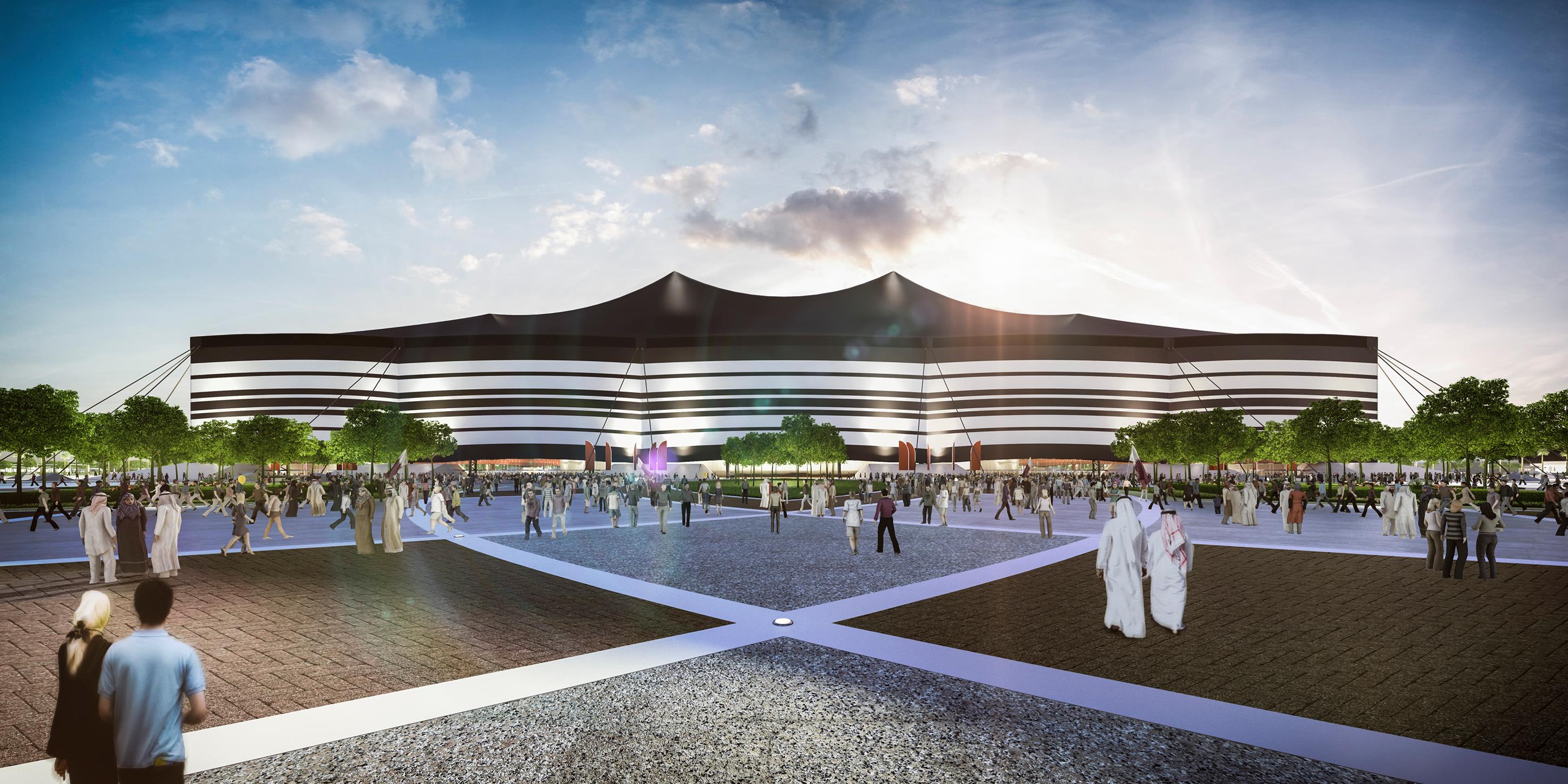Organizers of the 2022 World Cup in Qatar have released images of the second stadium design, Archdaily reports.
Dubbed the Al Bayt Stadium, the complex is planned for Al Khor City. It will be surrounded by retail space, restaurants, and landscaped recreational trails for cycling, jogging, and horseback riding.
The design is based on the Bayt Al Sha’ar, commonly known in English as "Bedouin Tents"—black and white tents used traditionally by nomadic people in Qatar, and a symbol of hospitality for desert travelers.
Designed by an unnamed group of Qatari architects, the stadium will attempt to meet LEED and Global Sustainability Assessment System (GSAS) standards.
The committee also stated that it will be constructed in accordance with the new Workers’ Welfare Standards, which Archdaily reports is a response to concerns over the safety and wefare of construction workers on Qatar’s world cup projects.
Al Bayt Stadium from Neoscape on Vimeo.
Related Stories
| Aug 19, 2011
Enhanced acoustical design
Ambient noise levels in some facility types are trending up and becoming a barrier to clear communication between building occupants.
| Jul 22, 2011
The Right Platform for IPD
Workstations for successful integrated project delivery, a white paper by Dell and BD+C.
| Jul 22, 2011
High-performance windows and doors
Learning objectives After reading this article, you should be able to: Understand issues of thermal performance and energy efficiency in relation to window and door systems; describe optimal detailing of the window-wall interface and how it contributes to building performance, sustainability, and occupant well-being; understand how durability contributes to sustainable windows/doors; and list sustainable O&M requirements for window and door systems.
| Jul 21, 2011
Falling Architecture Billings Index reflects decrease in design demands
This months Architecture Billings Index (ABI), provided by the American Institute of Architects, is almost a full point lower than last month’s reported score. June’s reading of 47.2 was short of the required 50 to achieve billings increases, making July’s reading of 46.3 an unwelcome sign of market tidings.
| Jun 29, 2011
New leadership role for architects in net-zero design
BD+C Editorial Director Rob Cassidy talks with RNL Design's Tom Hootman, AIA, about the changing role of architects in net-zero designs.




















